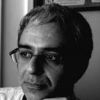Parts of the same whole, a yin and yang of hate

ON Sunday, Jan 29, 27-year-old Alexandre Bissonnette walked into the Quebec Islamic Cultural Centre during evening prayers and opened fire, killing six people and injuring many. He was tracked down and taken into custody, and later charged with six counts of first-degree murder and five counts of attempted murder. Notably, he was not charged with terrorism even though Canadian Prime Minister Justin Trudeau called the massacre a “terrorist attack”. Legal experts weighed in, saying that terror charges would not affect the sentence he received and arguing that the addition of such charges would place a greater burden on the prosecution which would then have to prove that this was indeed an act of terrorism. Bissonnette is a “lone wolf” — who acted on his own and without the support of a larger terrorist network. That, it is claimed, makes him distinct from, say, someone who claims allegiance to Daesh and perpetrates a similar atrocity.
That man is a terrorist because he acts for a global cause, with clear political objectives, and has usually gone through a definable process of radicalisation. But that’s exactly the process Bissonnette went through; his actions were very much part of a wider movement, one that includes Norwegian terrorist Anders Breivik and, arguably, Charleston shooter Dylan Storm Roof. Bissonnette wasn’t born a radical, as his acquaintances and online profiles testify, but began showing an interest in right-wing extremism after France’s far-right National Front Leader Marine Le Pen visited Quebec City in 2016. From then on, Bissonnette’s views grew more extreme. It is a world that is a mirror image of the one Daesh’s adherents dwell in; it has saints and martyrs and holy texts expounded by charismatic preachers who don’t wear turbans or sport long beards, but who are hate-mongers in every sense of the term. Three of these, Pamela Geller, Daniel Pipes and Richard Spencer, were even referenced by Anders Breivik in his manifesto much as jihadi preachers like Anwar al-Awlaki are referenced by Islamist terrorists. Like Bissonnette, Breivik belonged to no definable group, but drank from the same toxic brew.
It is a world where Western civilisation itself is threatened by invading Muslim hordes, where your Muslim neighbour is secretly plotting to impose Sharia and where the Muslim Brotherhood has infiltrated the US government. It is a world of absolutes, of us versus them. It is a world of lies (or “alternative facts”), where truth is simply a matter of perspective. And now, this fringe has gone mainstream. Talking points that were once the domain of obscure internet forums are now echoed by members of the White House administration. And then of course there’s Steve Bannon, founder of right-wing news outlet Breitbart and prominent Islamophobe who now is the White House’s chief strategist. Is it then any wonder that Bissonnette’s political hero, Trump, who tweets on just about every issue under the sun chose to ignore the Quebec massacre and instead focused on an attack in Paris, where a machete-wielding Egyptian was shot after attacking a soldier? Truth is, white right-wing extremists and their Muslim counterparts are parts of the same whole, a yin and yang of hate. Every terror attack by Muslim extremists emboldens and swells the ranks of Breivik’s and Bissonnette’s comrades, and as the Western world lurches to the right, enacting measures like the immigration ban, no one is happier than Abu Bakr al-Baghdadi and Ayman al-Zawahiri. Stuck in the middle, in what Daesh calls the gray zone of coexistence, are the rest of us — watching in horror and wondering if this dark tide will ever recede.
By arrangement with Dawn

